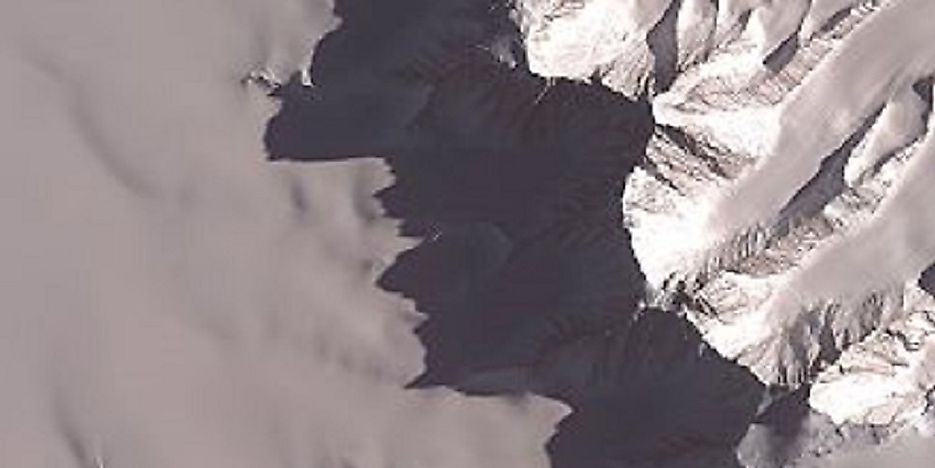Where Does Mount Tyree Rise?

5. Description
Mount Tyree is the second highest mountain of the frozen continent of Antarctica. It reaches a height of 15,919 feet (4,852 meters), second in height to Mount Vinson, which itself reaches a height of 16,050 feet (4,892 meters). Mount Tyree is located in the Sentinel Range of the continent, and lies but a distance 13 kilometers northwest of the Vinson Massif. The Sentinel Range bearing Mount Tyree lies towards the north of the Minnesota Glacier, forming the northern part of Antarctica’s Ellsworth Mountains. Mount Tyree represents Antarctica in the list of Seven Second Summits, and occupies the sixth position in the list, preceded by Mount Kenya of Africa, and followed by either Puncak Mandala of Indonesia (as per the Messner’s mountain list), or Mount Townsend of Australia (as per the Bass’s mountain list).
4. Historical Role
Mount Tyree is one of the most recently discovered high mountains of the world, with the mountain being first spotted in January of 1958 by military aerial explorers of the United States Navy's Air Development Squadron 6. The mountain was subsequently named after a U.S. Rear Admiral, David M. Tyree, who was in charge of the U.S. Naval Support Force in the continent from 1959 to 1962. John Evans and Barry Corbe were the first mountaineers to reach the summit of Mount Tyree in 1967. In 2012, Hans Kammerlander became the first mountaineer to climb all of the seven peaks listed among the Seven Second Summits, doing so by reaching the summit of Mount Tyree on January 3rd, 2012.
3. Modern Significance
Very little of Mount Tyree and its surrounding mountain habitats have been explored due to the extreme climatic conditions prevailing in this region. With an advancement in the tourism industry in the Antarctic, the number of climbers on this mountain is likely to increase in the near future. Currently, Mount Tyree can be accessed by a 6-hour flight from Punta Arenas in Chile to Union Glacier Camp, a private seasonal camp in Antarctica. From the camp, a ski plane carries the climbers across a distance of 200 kilometers to the base of Mount Tyree. Mount Tyree and its surrounding Antarctic habitat is of immense significance to modern science, as it helps the world’s scientists to unveil millions of years of Earth’s climatic historical records, and also better understand the impacts of human activities on the planet.
2. Habitat
Due to the extreme weather conditions prevailing in the mountain, Mount Tyree is almost completely devoid of any form of life. There are only two seasons in this continent, summer and winter. 24 hours of light and 24 hours of darkness prevail during the 6 months of summer and 6 months of winter, respectively. A polar climate prevails in the region, with average summer daytime temperatures being around −30° Celsius at the summit. Strong cold winds blow throughout the year, and these may last for days on end. The extremes of temperature discourage the existence of any life-form on Mount Tyree, or upon any other mountain ranges of the continent for that matter.
1. Threats and Disputes
Even though for a long time the frozen continent has remained pristine and unspoiled, the large numbers of researchers making footfall in the continent threatens to spoil its peace and beauty. Mount Tyree, like other parts of the continent is virtually completely pollution free. However, with increased access to the continent and the growth of tour operators in the region, the number of climbers on the mountain is likely to rise in the near future. Unfortunately, tourists to the continent often leave behind their wastes, which pollute the land, water, and air of the continent. Besides tourism, an even more ominous threat looms over the continent, and this is seen in the form of global warming and climate change. Rises in global temperatures could lead to the gradual, yet significant, melting of the ice masses covering parts of the land and mountains of Antarctica, raising the water level of the world’s oceans and triggering mass scale flooding of coastal cities and lowlands all around the world.











